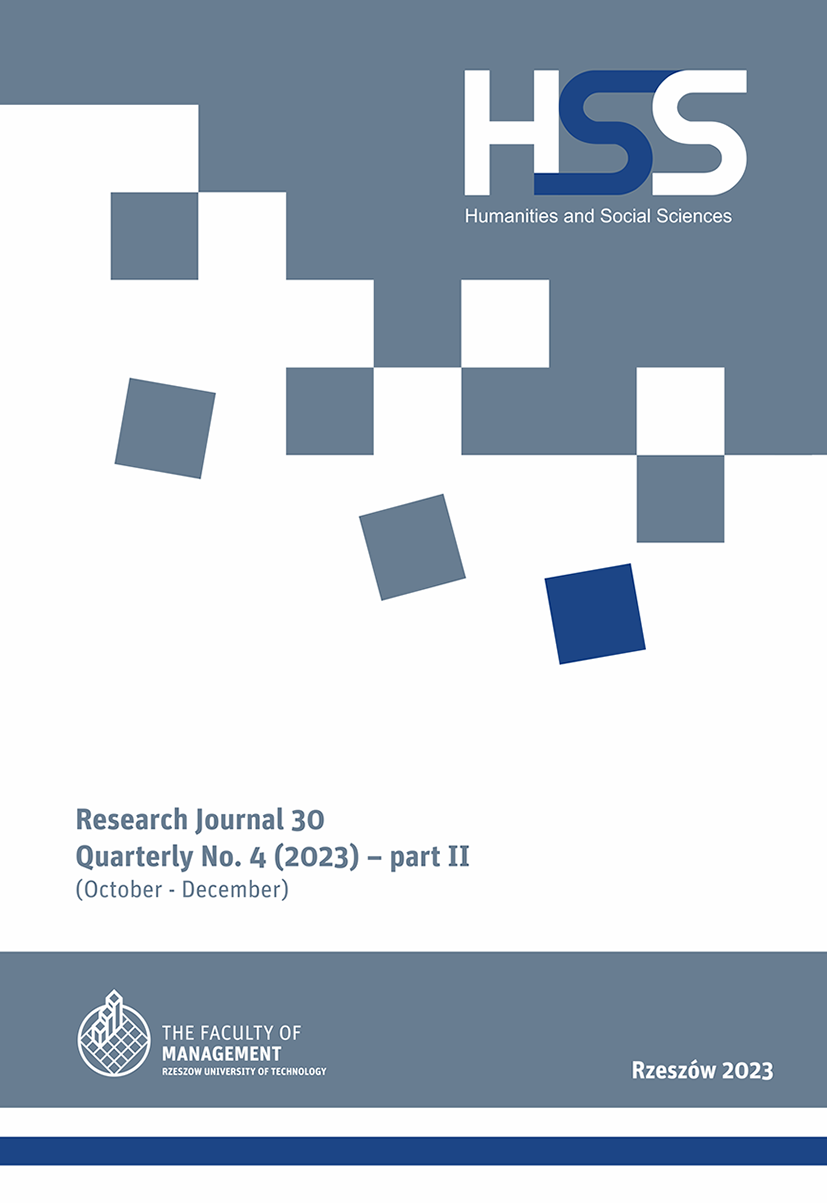Abstrakt
This article aims to analyze living conditions in Poland and Lithuania after theCOVID-19 pandemic, using Eurostat data for seven chosen indicators. The dynamics indices were used to examine the changes in the analyzed indicators over the studied period. Stepwise regression method was used to investigate the impact of the highlighted variables on GDP per capita. The indices allowed us to interpret whether there was a decrease or an increase in the variables throughout the analyzed period, as well as to compare the results for individual years. The results should help the authorities of the analyzed EU countries to make decisions regarding the objectives of the 2030 Agenda. The research shows that the GDP per capita variable is influenced by the inflation rate, people’s inability to “make ends meet,” and the share of people living in under-occupied dwellings. The dynamics of people at risk of poverty in Lithuania have increased by 1.5% since 2013. Based on the results for both Lithuania and Poland, the implementation of the main principles of the sustainable development goals, including the elimination of poverty and hunger, may be at risk. If the governments of these countries do not take decisive steps, the achievement of the SDGs by 2030 may be threatened.
Bibliografia
Allen, R., Bengtsson, T., Dribe, M. (2005). Living Standards in the Past: New Perspectives on Well-Being in Asia and Europe (1–22). “Oxford University Press”.
Boter, C. (2020). Living standards and the life cycle: reconstructing household income and consumption in the early twentieth-century Netherlands. “The Economic History Review”, 73(4). DOI: 10.1111/ehr.12997.
Breinlich, H., Leromain, E., Novy, D., Sampson, T. (2022). The Brexit vote, inflation and U.K. living standards. “The International Economic Review”, 63(1). DOI: 10.1111/iere.12541.
Cantillon, S. (2013). Measuring differences in living standards within households. “The Journal of Marriage and Family”, 75(3). DOI: 10.1111/jomf.12023.
Capelloa, R., Cerisola, S. (2023). Regional reindustrialization patterns and productivity growth in Europe. “Regional Studies”, 57(1). DOI: 10.1080/00343404.2022.2050894.
Cierpiał-Wolan, M., Stec-Rusiecka, J., Twaróg, D., Bilińska, K., Dewalska-Opitek, A., Wierzbiński, B. (2022). Relationship between Renewable Biogas Energy Sources and Financial Health of Food Business Operators. “Energies”, 15. DOI: 10.3390/en15165797.
Dluhopolskyi, O., Zhukovska, A. (2023). Inclusive development as an instrument to overcome economic inequality and discrimination. “ECONOMICS Innovative and Economics Research Journal”, Vol. 11, No. 1
Dowrick, S., Dunlop, Y., Quiggin, J. (2003). Social indicators and comparisons of living standards. “Journal of Development Economics”, 70(2). DOI: 10.1016/S0304-3878(02)00107-4.
Fleurbaey, M., Guillaume, G. (2009). International comparisons of living standards by equivalent incomes. “The Scandinavian Journal of Economics”, 111(3). DOI: 10.1111/j.1467-9442.2009.01578.x.
Franses, P., Hobijn, B. (2001). Are living standards converging? “Structural Change and Economic Dynamics”, 12(2). DOI: 10.1016/S0954-349X(00)00034-5.
Gertler, P., Martinez, S.W., Codina, M.R. (2012). Investing Cash Transfers to Raise Long-Term Living Standards. “American Economic Journal: Applied Economics”, 4(1). DOI: 10.1257/app.4.1.164.
Goldberg, R., Torras, M. (2021). Explaining Stagnant Living Standards in a Generalized Asset Growth Context. “Journal of Economic Issues”, 55(1). DOI: 10.1080/00213624.2021.1874796.
Guliyeva, A. (2022). Measuring quality of life: A system of indicators. “Economic and Political Studies”, 4. DOI: 10.1080/20954816.2021.1996939.
Jones, C. (2022). The End of Economic Growth? Unintended Consequences of a Declining Population. “American Economic Review”, 112(11). DOI: 10.1257/aer.20201605.
Kelly, M., Gráda, C. (2013). Living standards and mortality since the middle ages. “The Economic History Review”, 67(2). DOI: 10.1111/1468-0289.12023.
Migała-Warchoł A. (2021). Modeling of socio-economic development in European Union countries, Rzeszów: Oficyna Wydawnicza Politechniki Rzeszowskiej.
Migała-Warchoł, A., Pichla, M. (2021), Forecasting the number of cases and deaths from COVID-19, “IER”, Vol. 7, Kraków.
Migała-Warchoł, A., Surówka, A. (2022). Forecasting macroeconomic indicators for selected European Union countries, “European Research Studies Journal” Vol. XXV, Issue 2.
Migała-Warchoł, A., Ziółkowski, B., Babiarz, P. (2023). The circular economy vs the sustainable development approach to production and consumption: the case of the European Union countries, “Humanities and Social Sciences”. “Research Journal”, 30, No. 2.
Ngo, D.K.L. (2018). A theory-based living standards index for measuring poverty in developing countries. “Journal of Development Economics”, 130. DOI: 10.1016/j.jdeveco.2017.10.011.
Oulton, N. (2012). How to measure living standards and productivity. “The review of income and wealth”, 58(3). DOI: 10.1111/j.1475-4991.2012.00498.x.
Patxot, C., Rentería, E., Souto, G. (2015). Can we keep the pre-crisis living standards? An analysis based on NTA profiles in Spain. “The Journal of the Economics of Ageing”, 5. DOI: 10.1016/j.jeoa.2014.09.002.
Paul, A., Sen, J. (2020). A critical review of liveability approaches and their dimensions. “Geoforum”, 117. DOI: 10.1016/j.geoforum.2020.09.008.
Peet, E., Fink, G., Fawzi, W. (2015). Returns to education in developing countries: Evidence from the living standards and measurement study surveys. “Economics of Education Review”, 49. DOI: 10.1016/j.econedurev.2015.08.002.
Rao, N.D., Min, J. (2017). Decent living standards: material prerequisites for human wellbeing. “Social Indicators Research”, 138.
Shinice, J., Derek, Y. (2023). Re-examining the Multidimensional Poverty Index of South Africa. “Social Indicators Research”, 166. DOI: 10.1007/s11205-023-03062-4.
Veneri, P., Murtin, F. (2019). Where are the highest living standards? Measuring well-being and inclusiveness in OECD regions. “Regional Studies”, 53(5). DOI: 10.1080/00343404.2018.1463091.
Watts, J. (2020). Community living standards and rural household decision making. ”Journal of Rural Studies”, 80. DOI: 10.1016/j.jrurstud.2020.06.034.
World Inequality Report, 2022. Access on the internet: https://wir2022.wid.world/www-site/uploads/2022/01/Summary_WorldInequalityReport2022_English.pdf.


